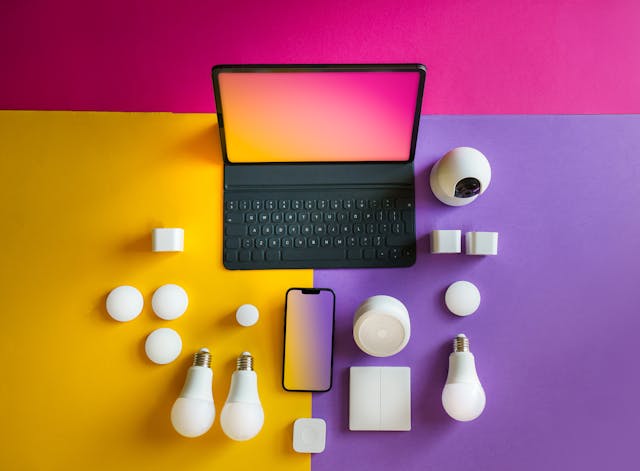
What is the IoT? The IoT is the Internet of Things, and it refers to all of the physical objects that are connected to the Internet.
The term Internet of Things was coined in 1999 by a computer scientist called Kevin Ashton. He had been tasked by Proctor & Gamble to come up with a way to optimize their supply chain. He wanted to put radio-frequency identification (RFID) chips in the labels of their products to track them all through the supply train. Then, using this information, they could work out where improvements needed to be made. He used Internet of Things as the title of his presentation to get the idea for RFID chips passed by the board at Proctor & Gamble. Ashton felt that RFID chips would be vital for the Internet of Things because tracking the movement of things would be vital. Inventory is still a huge part of the IoT, but a lot of it is done with barcodes and QR codes these days. At the time, not a lot of devices were connected and the term IoT was used by companies to refer to their supply chain tracking systems. It was only after 2010 that the term started to be used for other connected devices.
The first connected device was a vending machine at Stanford Artificial Intelligence Laboratory, connected in 1972. It was connected to a computer terminal that allowed it to sell through credit, a novel idea at the time. In 1982, students connected another vending machine to a computer network at Carnegie Mellon University. They could check its inventory and temperature online. The vending machine was only connected to the university network to begin with but became the first device connected to the early Internet. Since then, the number of devices connected to the Internet has increased almost exponentially.
We have experiences with IoT devices every day. Many of us have smart home systems in our houses. Amazon’s Alexa or Google’s Nest, for example. These devices let you control any other connected device in your home, just by talking to them. You can turn your lights on, run a bath, see who is at the door, and a whole host of other functions. These smart devices also encapsulate machine learning so that they can learn your preferences and help you more accurately. Every time you use one of them, the data gets sent back to the company, where it is analyzed by computers. Over time, the devices will learn your preferences and possibly perform actions before you even ask for them. Smart fridges are also quite common these days. They know what food they have inside and can offer you recipe ideas. They can remind you when you have run out of something. There will be a point, probably quite soon, where your fridge can order you milk and groceries without even consulting you.
We also experience IoT systems outside our houses daily and we wouldn’t be able to have a normal life without them. If you drive to work, the traffic lights are probably networked and programmed to adjust to traffic conditions. The streetlights will be connected and programmed to dim based on the sunlight. If you take the subway, the trains will be networked, so that it is known where they are. Some countries have driverless subway trains, which must be networked. When you buy a ticket or scan your ticket, you are using an IoT connected device. Your office will have security cameras that are networked, heating systems or cooling systems that are networked, and possibly smart energy meters. And if, like me, you have a smartphone and a smartwatch, you are carrying the IoT with you at all times. If you go shopping, the shop will have smart energy systems, the stock will be monitored by computer, and when you pay by credit card, you are relying on the IoT to pay the charge for you. The IoT is everywhere and we could not live without it.
There are several risks that come from the IoT. The first is obviously hacking or viruses. If somebody can hack into an IoT network, for example, one controlling driverless cars, who knows what damage they could do. However, there is probably less risk from a system like that because it would be heavily protected. There is probably a far higher risk from all of the cheap Internet connected devices that are being produced in countries like China. These devices are cheap, designed to be thrown away when they break, and have absolutely no security. A vast percentage of the IoT is made up of devices like this. And this is what I learned today.
Try these:
Sources
https://en.wikipedia.org/wiki/Internet_of_things
https://www.ibm.com/think/topics/internet-of-things
https://www.verdict.co.uk/history-of-iot/?cf-view
https://en.wikipedia.org/wiki/Radio-frequency_identification
https://www.deepseadev.com/en/blog/examples-of-iot-in-daily-life
https://en.wikipedia.org/wiki/List_of_driverless_train_systems
Photo by Jakub Zerdzicki: https://www.pexels.com/photo/smart-home-devices-18485666/
